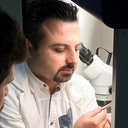Cryopreservation of Thymus cariensis and T. vulgaris shoot tips: comparison of three vitrification-based methods.
Paraules clau
Resum
Thymus is an important genus of the Lamiaceae family, comprising more than 400 perennial aromatic thyme species, which are used extensively for medicinal and culinary purposes. The present study focused on the development of cryopreservation procedures for Thymus vulgaris and T. cariensis, the latter being an endemic and endangered species of Turkey. For cryopreservation of T. vulgaris shoot tips, PVS2-based one-step freezing methods, i.e., PVS2 vitrification, encapsulation-vitrification and droplet-vitrification, were compared. Cold hardening and sucrose preculture were also optimized before the cryopreservation trials. For T. cariensis, a droplet-vitrification method was applied to cold-hardened shoot tips, and after sucrose preculture. In all the methods tested, PVS2 was applied for up to 120 min. The best T. vulgaris cryopreservation was achieved with a droplet-vitrification method, that involved 2-weeks cold hardening of shoot cultures, 48 h preculture of shoot tips on MS medium supplemented with 0.25 M sucrose, and a 90 min PVS2 treatment in droplets. After direct immersion in LN, thawing and plating, 80% of shoot-tips recovered. Post-thaw recovery was significantly lower when the same procedure was applied to T. cariensis shoot tips; however also here 90 min PVS2 treatment produced the highest survival (25 percent) and recovery (25 percent) levels.


